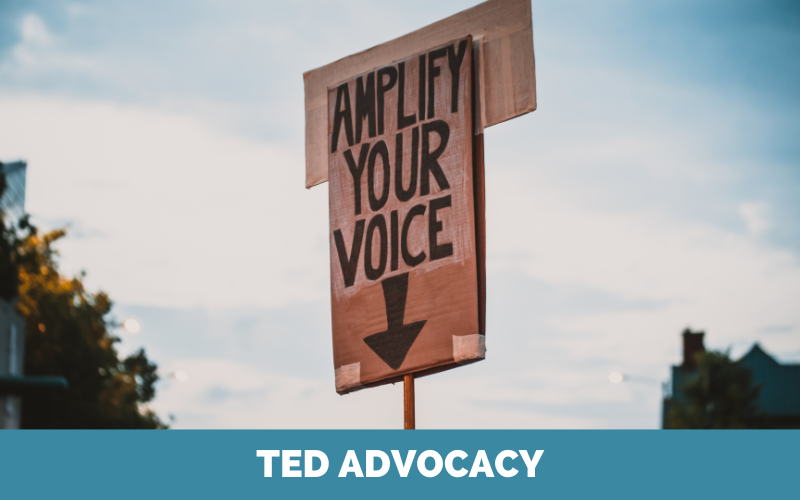Thyroid Eye Disease
5 steps for sharing your comments with the PBAC
Follow these simple steps to share your thoughts on new medicines with the Pharmaceutical Benefits Advisory Committee. Your voice counts.
Now that you know more about how the medicine approval process works in Australia and how your comments can have an impact, we’re going to show you how to share your comments with the government.
The good news is, you don’t have to be a good public speaker or have high literacy skills. We can help you find the best ways to tell our Australian Department of Health about how your condition and current treatments affect you on many levels plus the difference new treatments could make to your life.
There are many reasons you might like to send your comments to the Pharmaceutical Benefits Advisory Committee (PBAC). For example, you might:
- Feel that the currently available treatments for your condition aren’t effective enough for you. Maybe you might not meet the access requirements for them or they might cause you severe side effects.
- Have no existing available treatments for your condition and you’re just doing the best you can to deal with the symptoms while your condition gets worse. However, you know of a potential new medicine that could help you.
- Be on a clinical trial for a new medicine and it’s working for you, so you want to ensure it gets listed on the Pharmaceutical Benefits Scheme (PBS).
- Already be accessing a medicine that helps you via the PBS and you want to help expand the access requirements so others can potentially experience the same benefits you do.
Or perhaps someone you know fits one of these scenarios and you want to do as much as possible to help them (and others like them) access the most advanced treatments available.
Now that you know why you want to advocate, you need to know what medicine (or medicines) you want to advocate for. But how do find out what’s out there? Here are a few suggestions.
- Reach out to us at GHLF Australia as we can help you find this information.
- Follow international health organisations and support groups related to your condition. Many of these discuss treatments available in specific countries and may include stories from real patients using them.
- Follow or join Australian health organisations and support groups related to your condition. They might share information about research breakthroughs and treatments in the pipeline here.
- Find out if any clinical trials are looking at new treatments for your condition. You can do this by searching the Australian New Zealand Clinical Trials Registry
- Ask members of your healthcare team if they know of any potential new treatments that could help you.
If you know of a specific medicine you want to see added to the PBS, you can check if it has already been registered by the Therapeutic Goods Administration (TGA). Registered products have been approved for sale in Australia, however, they are not currently subsidised through the PBS. That means, you can access them, but you will have to pay full price for them. This could be up to thousands of dollars per pack.
Always check with your treating doctor if a medicine you are considering is suitable for you.
Medicines under consideration by the PBAC
You can find out if medicines and other health technologies have already been assessed or are being assessed by the PBAC on their Medicine Status website. This website allows you to search for and monitor the status of medicines as they progress through the PBS listing process. It also enables you to better understand how you can contribute to PBAC decision-making and the steps that must be completed to list a medicine on the PBS.
For more information on PBAC activities, you can subscribe to emails from the Communications from the Consumer Evidence and Engagement Unit (CEEU) within the Office of Health Technology Assessment (OHTA)
The PBAC meets each March, July and November to consider which medicines and medical products to list on the PBS. This is part of the broader health technology assessment process. The items under consideration in each meeting are listed on the agenda, which is available 14 weeks before each PBAC meeting. You can visit the PBS website to see the agenda for current and previous meetings.
Add comments to our submissions
Our submissions are written on behalf of our community as a whole. We look at each PBAC agenda and usually select a small number of medicines most relevant to our community and advocacy focus at that time. We then invite members of our community to contribute comments about their lived experiences and thoughts on the medicine under consideration. These comments are included as quotes in our submission.
Check our GHLF Australia and CreakyJoints Australia websites, newsletters or social media platforms (Facebook, Instagram and X/Twitter) or contact us for updates on submissions we are planning.
You can read examples of our previous submissions in the Advocacy section of our GHLF Australia website.
Create your own submission
Making your own submission (or Consumer Comment) is an ideal way for you to share your views directly with the PBAC. This process is easier than you may think and it is up to you how much time and effort you want to put in. You can reach out to us for help as we are experts at creating submissions and can help walk you through how to do them.
The simplest way to make a submission is to use the relevant online survey form available on the Office of Health Technology Assessment (OHTA) consultation hub. Here you’ll find links to the survey form for each open PBAC agenda consultation. The current standard questions on the form are:
- Please outline your experience with the medical/health condition
- How is the medical/health condition currently treated?
- What do you see as the advantages of this proposed medicine, in particular for those with the medical condition and/or family and carers?
- What do you see as the main disadvantages of this proposed medicine?
- Please provide any additional comments you would like the PBAC to consider.
You only need to answer the questions you see as relevant and can leave the others blank. Your answers can be as short as a few sentences or as long as you like. What is important is the substance of the points you want to share.
Alternatively, you can address these questions in writing with or without using a question-and-answer format. Or, if you prefer, you can record your submission in an audio/visual format.
You can send your submission:
- Via email to the PBAC directly via [email protected]
- Via mail to the PBAC Secretariat, MDP 952, Department of Health and Ageing, GPO Box 9848, Canberra ACT 2601.
The deadline for most submissions is usually eight weeks after the start of each consultation period.
The PBAC wants to know about what it is like to live with your condition, how current treatments affect you and what you see as the likely impacts of proposed new medicines. Therefore, you don’t need to give them facts and figures about your condition itself or the scientific data related to your condition or treatments. They already have that information.
The dos and don’ts of writing PBAC submissions
- Don’t cut and paste. Do share what you know. PBAC is not influenced by the of Consumer Comments it receives because its advice is based on evidence. Consumer Comments are a way of using your lived to inform PBAC about issues that may be missing in that evidence.
- Don’t give general information. Do be specific. Does the fatigue or pain that comes with your condition impact on your ability to work, go to school or have a social life? Explaining the wider impact of symptoms helps people better understand your needs and what you experience.
- Don’t give number of cases. (Unless you disagree with the number given.) Do explain the difficulties of having a rare disease. Did having a rare disease make it hard to get a diagnosis and information? Is it difficult to access expert doctors and treatment in your area? Information like this can help people better understand your needs.
- Don’t explain the condition. Do explain the reality of living with the condition. Are you isolated at home, unable to prepare meals or did a family member have to give up work to care for you? Specific information about the impact on daily life is more useful than saying “difficult managing side effects”.
- Don’t explain the treatment. Do explain the reality of having (or not having) treatment. In what specific way do you think the new treatment will make life better for you? If you’re already using the treatment, what has been your experience? If you’re funding it yourself, what is the cost of that (financial and other costs)?
- Don’t submit clinical data. Do submit what happens in the real world. If you represent a patient group or community, do you have information about your members’ experiences, pathways, preferences or unmet needs? Consider collecting information or partnering studies that answer the questions that matter to you.
- Don’t submit published literature and stats. Do submit the numbers that matter to you. How many nights do you spend in hospital each year? How many days do you take off work for medical appointments? How long does it take you to get ready to go out? Numbers like these can help others better understand how a treatment might benefit you.
- Don’t hold yourself responsible. Do what matters most. You may be able to submit useful information to PBAC, but there are no guarantees you will get the outcomes you seek. This is because PBAC advice is always formed from multiple sources of information – including clinical and cost-effectiveness evidence – never one input. Patient voices can be valuable input, but being involved can be stressful. Your right not to get involved or stop being involved is respected.
(You can also download a more detailed PVI Tip Sheet for submitting Consumer Comments to the PBAC.)
When you send a submission to the PBAC, it is logged and made anonymous so the identity of the person who commented is not known by the PBAC Committee. It is then read by a consumer representative who looks for insights among the comments and groups them into themes. The consumer representative may have thousands of comments to read in the four weeks before PBAC meets.
The consumer representative then summarises the insights before the meeting so that all committee members have access to these summaries alongside the evidence reports.
Currently, there is no formal process for providing feedback on how useful the comments were or how they were taken into account when PBAC formed its advice. However, once the decision has been made public, you can email the Consumer Evidence and Engagement Unit at [email protected] for such information.
Australian Government: Department of Health and Aged Care. HTA Consumer Evidence and Engagement Unit. https://www.health.gov.au/contacts/hta-consumer-evidence-and-engagement-unit
Australian Government: Department of Health and Aged Care. Office of Health Technology Assessment (OHTA) consultation hub. https://ohta-consultations.health.gov.au
Australian Government: Department of Health and Aged Care. Pharmaceutical Benefits Scheme. PBAC Meeting Agenda and Consumer Comments. https://www.pbs.gov.au/info/industry/listing/elements/pbac-meetings/pbac-consumer-comments
Patient Voice Initiative: https://www.patientvoiceinitiative.org/
Patient Voice Initiative: YouTube channel. https://www.youtube.com/@patientvoiceinitiative7055
Patient Voice Initiative: video. How Australia’s healthcare reimbursement system works and how you can get involved. https://www.patientvoiceinitiative.org/patients/how-australias-healthcare-reimbursement-system-works-and-how-you-can-get-involved/I video. How Australia’s healthcare reimbursement system works and how you can get involved
Some of the content on this page has been taken, with permission, from resources published by the Patient Voice Initiative. GHLF Australia collaborates closely with PVI, which is dedicated to ensuring that decisions about healthcare in Australia are better informed by the knowledge of patients (or health consumers), carers and patient groups.




